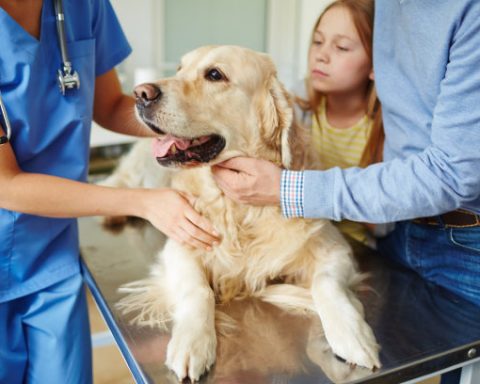Dog Heat Stroke Death Cases
Cases of dogs dying of heatstroke occur frequently at home and abroad. Some owners thought they were just going to buy something and would be back in a while, so they left their dogs in the car and found that the dogs had died of heatstroke when they came back.
Police working dogs have also occurred similar cases, there is a report of a local police with police dogs into the mountains to search for fugitives, police dogs because of extreme excitement and forget about their work, and they will not say that they drink hot to drink water, and police officers at that time did not bring a lot of water, so the negligence of the timely replenishment of water, resulting in severe dehydration of the dog. The next day the dog suddenly collapsed and fell to the ground while working, the officer realized that the dog needed water, but it was too late, the officer tearfully held the dog and walked a few miles to the river at the bottom of the hill, but the hard-working dog no longer needed water.
Dogs are very heat intolerant animals
Because the dog will not sweat, and will not stop the activity because of the heat; the dog’s body can not self-regulate the temperature, the dog will not take care of themselves in time to replenish water; the dog’s sweat glands are all on the tongue, so to see the dog spit out his tongue panting shows that the dog is very hot, and need to drink water to cool down or stop the activity of the quiet down; short-nosed dogs are more fearful of the heat than the long-nosed dog, and less likely to dissipate the heat.
A dog’s normal body temperature should be between 37.8°C and 39°C. Internal organs begin to be damaged when the body temperature reaches 40.65°C, and the body temperature is highly dangerous when it reaches 41°C or more. In a high heat environment or a high humidity muggy climate, it can take as little as 20 minutes for a dog’s body systems to fail and die, so heatstroke is the biggest threat to a dog’s health in summer or other muggy weather conditions.
What are the symptoms of heat stroke?
Loud panting with the mouth open, panting accompanied by a murmur in the lungs and saliva appearing on the mouth; walking with the body swaying out of balance; weakness; blurred consciousness, and finally, collapse and death.
When a dog shows symptoms of heatstroke, the owner should immediately take self-help first, instead of just waiting for a veterinarian. The most important thing is to bring down the dog’s body temperature as soon as possible, by drenching the dog’s body with cool water (not ice water, which reduces the speed of circulation in the skin and thus prolongs the cooling time), or by putting the dog into a cold bath to cool down. The dog should then be taken to a veterinary clinic as quickly as possible. Dogs do not usually drink on their own in this situation, so it is important to get to the vet for treatment with IVs and other means of rapid hydration and other medications.
How to travel with your dog
If you take your dog on a trip or even out for a walk, even if it’s just for 1-2 hours, it’s fine for people not to drink, but make sure to hydrate your dog often, especially in the summer and sweltering heat; dogs need to take breaks once every 30 minutes when they’re walking or running at a fast pace, even in the winter.
If you take your dog for a ride in the car in the summer, you should never leave your dog in the car, because the temperature inside the car under direct sunlight (even in hot and muggy weather without sunlight) rises at an alarming rate, and it may take less than 20 minutes for the dog to die.
Dogs with short noses, such as Kingbars, need special care, as they have a harder time dissipating heat, and can even be sprayed with water frequently in the summer.
Most importantly, avoid strenuous exercise in hot or humid weather, and walk or exercise your dog preferably in the evening or morning.
Dogs should be allowed to rest every 30 minutes to lower their body temperature, and should not be allowed to do strenuous exercise, such as running or playing, for a long period of time, even if the dog does not want to stop.
